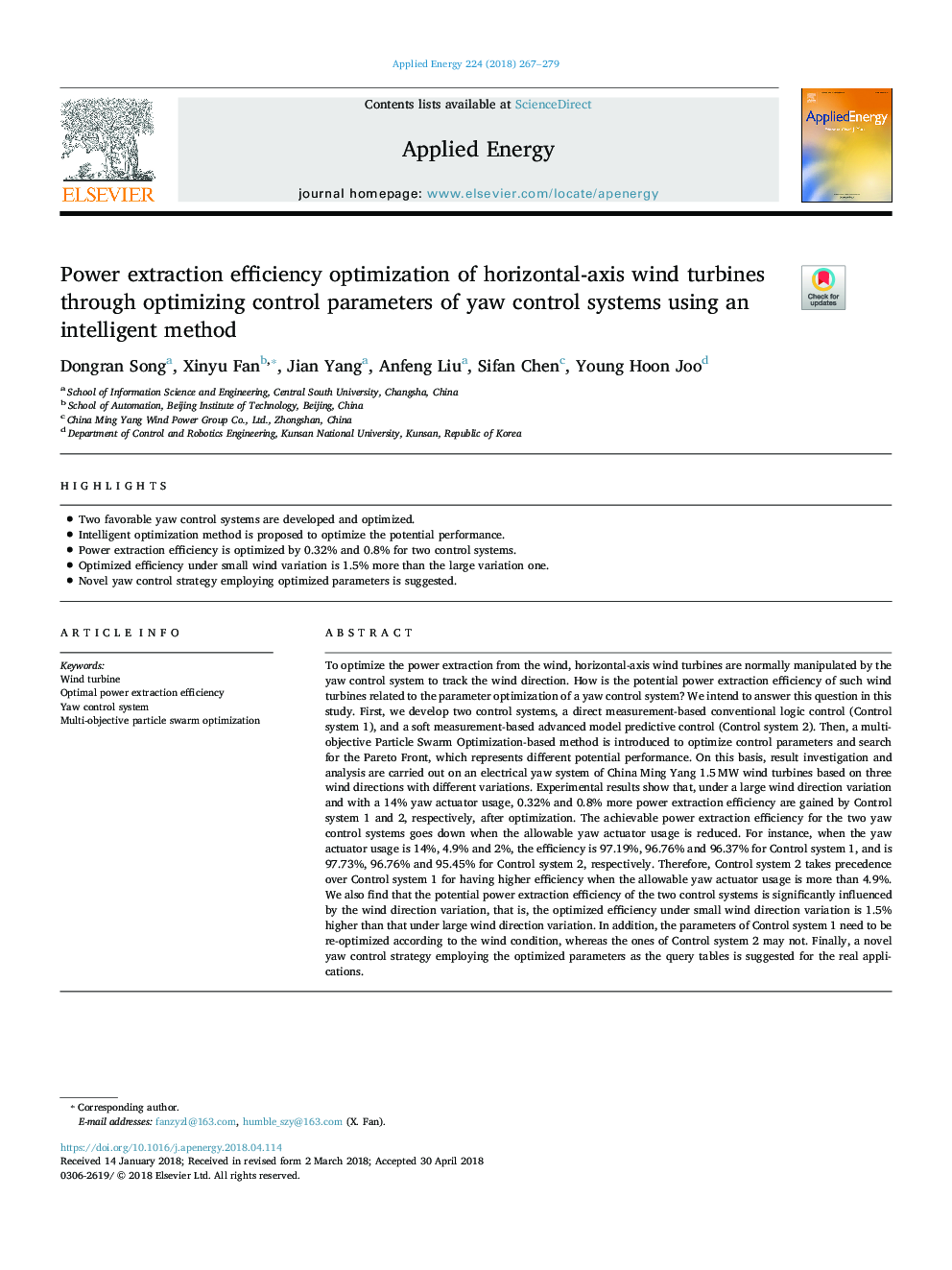| کد مقاله | کد نشریه | سال انتشار | مقاله انگلیسی | نسخه تمام متن |
|---|---|---|---|---|
| 6679940 | 1428066 | 2018 | 13 صفحه PDF | دانلود رایگان |
عنوان انگلیسی مقاله ISI
Power extraction efficiency optimization of horizontal-axis wind turbines through optimizing control parameters of yaw control systems using an intelligent method
ترجمه فارسی عنوان
بهینه سازی بهره وری بهره برداری از توربین های بادی افقی محور از طریق بهینه سازی پارامترهای کنترل سیستم های کنترل جاوا با استفاده از روش هوشمند
دانلود مقاله + سفارش ترجمه
دانلود مقاله ISI انگلیسی
رایگان برای ایرانیان
کلمات کلیدی
موضوعات مرتبط
مهندسی و علوم پایه
مهندسی انرژی
مهندسی انرژی و فناوری های برق
چکیده انگلیسی
To optimize the power extraction from the wind, horizontal-axis wind turbines are normally manipulated by the yaw control system to track the wind direction. How is the potential power extraction efficiency of such wind turbines related to the parameter optimization of a yaw control system? We intend to answer this question in this study. First, we develop two control systems, a direct measurement-based conventional logic control (Control system 1), and a soft measurement-based advanced model predictive control (Control system 2). Then, a multi-objective Particle Swarm Optimization-based method is introduced to optimize control parameters and search for the Pareto Front, which represents different potential performance. On this basis, result investigation and analysis are carried out on an electrical yaw system of China Ming Yang 1.5â¯MW wind turbines based on three wind directions with different variations. Experimental results show that, under a large wind direction variation and with a 14% yaw actuator usage, 0.32% and 0.8% more power extraction efficiency are gained by Control system 1 and 2, respectively, after optimization. The achievable power extraction efficiency for the two yaw control systems goes down when the allowable yaw actuator usage is reduced. For instance, when the yaw actuator usage is 14%, 4.9% and 2%, the efficiency is 97.19%, 96.76% and 96.37% for Control system 1, and is 97.73%, 96.76% and 95.45% for Control system 2, respectively. Therefore, Control system 2 takes precedence over Control system 1 for having higher efficiency when the allowable yaw actuator usage is more than 4.9%. We also find that the potential power extraction efficiency of the two control systems is significantly influenced by the wind direction variation, that is, the optimized efficiency under small wind direction variation is 1.5% higher than that under large wind direction variation. In addition, the parameters of Control system 1 need to be re-optimized according to the wind condition, whereas the ones of Control system 2 may not. Finally, a novel yaw control strategy employing the optimized parameters as the query tables is suggested for the real applications.
ناشر
Database: Elsevier - ScienceDirect (ساینس دایرکت)
Journal: Applied Energy - Volume 224, 15 August 2018, Pages 267-279
Journal: Applied Energy - Volume 224, 15 August 2018, Pages 267-279
نویسندگان
Dongran Song, Xinyu Fan, Jian Yang, Anfeng Liu, Sifan Chen, Young Hoon Joo,
